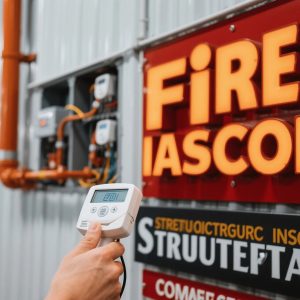The Unique Insurance Needs of Demolition Contractors
Demolition work represents one of the most hazardous operations in the construction industry, requiring specialized demolition contractor insurance that goes far beyond standard contractor policies. Unlike traditional construction where risks are somewhat controlled, demolition involves intentional destruction that creates unpredictable hazards. From collapsing structures to unexpected material exposures, demolition professionals face unique liabilities that standard insurance products often exclude. The most comprehensive coverage programs address not just the obvious physical dangers but also less apparent risks like historical preservation violations, neighboring property damage claims, and hazardous material disturbances. Contractors who assume their general liability policy automatically covers demolition activities frequently discover dangerous gaps when claims arise.
What separates adequate protection from insufficient high-risk job insurance for demolition contractors often comes down to policy endorsements and exclusions. Many standard commercial policies contain absolute pollution exclusions that leave contractors vulnerable when demolishing older buildings containing asbestos, lead, or other contaminants. Similarly, collapse exclusions in basic policies might negate coverage for the very activity that defines demolition work. The most thorough programs are written on specialized forms that specifically contemplate controlled demolition activities while maintaining robust protection for third-party injuries, property damage, and environmental exposures. These policies typically require higher liability limits than standard construction policies – $2 million minimum is now considered baseline for most professional demolition operations.
Essential Coverages for Demolition Operations
Building a complete insurance portfolio for demolition work requires layering several critical construction hazard insurance components. Commercial general liability forms the foundation but must include specific endorsements for demolition and wrecking operations. Most insurers require proof of specialized training and safety protocols as a condition of coverage. Contractors should ensure their policies include premises operations coverage for active job sites and products-completed operations coverage for potential latent defects. Many demolition contractors now add protective liability coverage that extends to architects and engineers involved in project planning – crucial protection when design professionals are named in lawsuits alongside contractors.
The specialized nature of demolition makes accident protection policy considerations particularly important. Unlike standard construction where accidents typically involve falls or equipment mishaps, demolition incidents often involve structural collapses or flying debris that can cause catastrophic injuries. Many insurers now require documented debris containment systems and dust control measures as a condition of coverage. The most comprehensive programs include coverage for explosive demolition when conducted by licensed specialists, though this typically requires separate underwriting and additional premium. Contractors should pay particular attention to policy definitions of “collapse” to ensure their specific demolition methods aren’t inadvertently excluded from coverage.
Navigating the Demolition Insurance Underwriting Process
Securing adequate general liability policy coverage for demolition work requires thorough preparation for a rigorous underwriting review. Insurers will scrutinize everything from equipment maintenance records to employee training certifications before offering terms. Most require at least five years of loss runs, detailed descriptions of demolition methods used, and documentation of safety management systems. Underwriters pay particular attention to a contractor’s experience with different structure types – those specializing in industrial facility demolition face different risk profiles than residential teardown contractors. They’ll also evaluate waste disposal practices, preferring contractors with established relationships with licensed hazardous material disposal firms.
The underwriting process for demolition contractor insurance typically includes a review of pre-demolition inspection protocols. Insurers want to verify thorough asbestos surveys, structural evaluations, and utility disconnection documentation. Many now require drone surveys of adjacent properties to establish pre-existing conditions before work begins. The most favorable terms go to contractors that can demonstrate exceptional safety cultures through documented near-miss reporting systems, regular equipment inspections, and investment in protective technologies like remote demolition equipment. Underwriters also evaluate a contractor’s relationships with engineering firms, preferring those that work with experienced structural engineers to plan complex demolitions.
Cost Management Strategies for Demolition Coverage
While high-risk job insurance for demolition contractors commands premium pricing, savvy operators can implement several strategies to control costs without sacrificing protection. Many insurers offer substantial discounts for contractors that implement specific risk control measures like dust suppression systems, vibration monitoring, and 360-degree equipment camera systems. Some provide premium credits for completing recognized safety programs such as the National Demolition Association’s safety certification. Perhaps most importantly, maintaining a clean safety record over time remains the single most effective way to qualify for preferred rates in this specialized market.
Creative structuring of construction hazard insurance programs can also yield significant savings. Many contractors opt for layered programs with higher deductibles on predictable smaller claims while maintaining robust coverage for catastrophic exposures. Others participate in group captive programs that allow sharing of risk with similar-quality operators. Some explore parametric insurance products that provide predefined payouts for specific incident types, helping manage cash flow during crises. The most cost-effective programs often combine traditional insurance with strong self-insurance components for predictable, high-frequency/low-severity claims that don’t threaten financial stability.

Regulatory Compliance and Insurance Implications
The complex web of regulations governing demolition work directly impacts general liability policy terms and coverage availability. Contractors must maintain meticulous documentation of asbestos handler certifications, explosive permits where applicable, and OSHA compliance records to qualify for coverage. Many insurers now require proof of participation in drug and alcohol testing programs that exceed standard requirements. Environmental compliance is equally critical – contractors working in areas with historical preservation ordinances need to demonstrate awareness of these restrictions that could affect claim scenarios. The most thorough insurers conduct regular compliance audits as a value-added service, helping policyholders avoid coverage gaps created by regulatory missteps.
Recent changes in accident protection policy requirements for demolition have created new insurance challenges. Silica dust exposure regulations now typically require specific engineering controls and medical monitoring that affect policy terms. Some jurisdictions have implemented stricter noise and vibration limits that require specialized monitoring equipment. The emergence of “deconstruction” as an alternative to mechanical demolition has created coverage uncertainties that insurers are still addressing. Savvy contractors stay ahead of these changes by working with specialized brokers who track regulatory developments and can advise on necessary policy adjustments before they become compliance issues.
Emerging Risks in Demolition Operations
The demolition industry is evolving in ways that demand constant demolition contractor insurance program reviews. Urban densification means more teardowns occurring in tight spaces with multiple adjacent occupied structures. Climate change is increasing weather-related risks during demolition, particularly for tall structures in high-wind areas. The growth of mixed-use redevelopment projects means more demolitions involving structures with unknown prior uses and potential hidden hazards. Forward-looking insurers are developing new products to address these emerging risks, but contractors must proactively seek out these solutions rather than relying on outdated coverage forms.
Technological advancements are also reshaping high-risk job insurance for demolition contractors. Robotic demolition equipment reduces worker exposure to hazards but introduces new liability scenarios if malfunctions occur. Drones are increasingly used for pre-demolition surveys and progress monitoring, creating potential aviation liability exposures. Advanced dust suppression systems and real-time air monitoring devices are becoming standard on many jobsites, with some insurers offering premium discounts for their use. The most innovative contractors are even experimenting with augmented reality systems that help operators visualize structural weaknesses during demolition – technologies that could eventually influence underwriting models as loss data accumulates.
Claims Management Best Practices for Demolition Incidents
When demolition incidents occur, proper claims handling can mean the difference between a manageable insurance event and a company-ending catastrophe. Specialized construction hazard insurance providers typically maintain emergency response teams familiar with demolition-specific claims scenarios. These experts understand the importance of immediately documenting debris patterns, equipment positions, and witness statements that might later prove crucial. The best policies include pre-approved networks of engineers and industrial hygienists who can quickly assess structural failures or environmental releases – rapid response often dramatically reduces total claim costs.
Documentation procedures for accident protection policy claims involving demolition require particular attention. In addition to standard incident documentation, demolition claims often require pre-work surveys, demolition plans, and records of safety meetings. Many insurers now provide mobile apps that guide supervisors through proper incident documentation while ensuring compliance with regulatory reporting requirements. Perhaps most importantly, contractors should conduct post-incident reviews to identify process improvements – not just to prevent future accidents but to demonstrate to insurers their commitment to continuous safety improvement, which can help mitigate premium increases following claims.
Building Long-Term Relationships with Specialty Insurers
In the specialized world of demolition contracting, developing strong partnerships with general liability policy providers pays dividends over time. Unlike standard insurance where contractors often shop for the lowest price annually, demolition coverage benefits from continuity with insurers who develop deep understanding of a contractor’s specific operations. These long-term relationships become particularly valuable when incidents occur, as familiar insurers are more likely to work collaboratively on claims rather than taking adversarial positions. Many specialty insurers offer loss control services that help contractors identify and address risks before they lead to claims – a value-added service that general market insurers rarely provide.
The most successful demolition contractors treat their demolition contractor insurance providers as strategic partners rather than just vendors. They involve insurers early in decisions about new equipment purchases or project types to ensure coverage remains adequate. They participate actively in safety groups and conferences sponsored by their insurers. Perhaps most importantly, they maintain transparent communication about both successes and challenges in their safety programs. This collaborative approach often leads to more favorable terms at renewal time and can make the critical difference in maintaining affordable coverage during industry hard markets when many contractors find themselves struggling to secure any coverage at all.





